Molecular Mixology:
A New Era of Cocktails
The art of mixology has seen a revolutionary shift with the introduction of molecular gastronomy techniques, leading to the creation of spectacular unique alcohol mixology drinks. This scientific approach to cocktail making allows mixologists to push the boundaries and create an entirely new drinking experience that entices all the senses. Molecular mixology involves manipulating ingredients at the molecular level to transform their states, textures, and flavors, resulting in innovative and sometimes outlandish cocktails.
One of the most talked-about examples of this trend is the Caviar Martini. The trick lies in utilizing a technique known as spherification, a process that creates small, jelly-like spheres which resemble caviar. The process involves dropping a mixture of the alcohol and a gelling agent into a cold solution, which instantly forms a delicate skin around the droplet, encasing the liquid inside. These tiny alcoholic “caviar” beads burst in the mouth, releasing the spirit in a novel and exciting way.
Another creation that illustrates the ingenuity of molecular mixology is the Smoking Manhattan. This twist on the classic cocktail involves infusing it with smoke to add a deep, smoky flavor reminiscent of a bygone speakeasy era. Smoke infusion can be accomplished through several methods, such as using a handheld smoker, which infuses the drink with smoke from wood chips, or by trapping smoke in a glass and then shaking or stirring the cocktail in that smoky environment.
The results of these methods are not just gustatory; they offer visual and olfactory thrills that elevate the experience. The spectacle of a smoking cocktail, for example, creates anticipation and adds a theatrical element that is sure to captivate any audience. By appealing to multiple senses, molecular mixology isn’t just about drinking; it’s about creating an experience.
For those intrigued by the fusion of science and mixology, further exploration is easily attainable. Many online resources and mixology courses can introduce you to the basic techniques. As for practical demonstrations and recipes, you can find a plethora of information through key mixology influencers and websites.
To explore these avant-garde techniques and learn how to create your own unique alcohol mixology drinks, a high ranking resource you might consider is Molecular Recipes, a website dedicated to the intersection of mixology and molecular gastronomy.
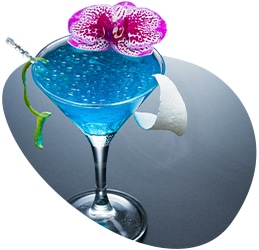
Table of contents:
- The Herbaceous Enigma: A Culinary Adventure
- Decadent Dessert Libations: Sweet Meets Savory
- Foraged Flavors: Nature’s Cocktail Cabinet
- Jackfruit Jive: Tropical Unorthodox
- Pepper Potations: Spicy Spirits
- Tea-Time Tipples: Brews and Booze
- Coffee Craftings: Caffeine and Cocktails
- Savory Sips: Unusual Umami
- Charcoal Charged Cocktails: The Dark Drink
- Sour Surprises: Picking Unripe Fruits
- Botanical Brews: A Garden in Your Glass
- Lacto-fermented Libations: Probiotic Potables
- Curious Concoctions: The Wildest Combinations
- Artisanal Ice: More Than Just Frozen Water
The Herbaceous Enigma: A Culinary Adventure
When delving into the realm of unique alcohol mixology drinks, the “Rosemary Mystery” cocktail epitomizes a trend that transcends traditional boundaries, embracing culinary creativity and botanical flair. This concoction, which places a spotlight on fresh herbs and spices, marries the aromatic vigor of smoked rosemary with the smooth sophistication of gin and the sweet subtlety of elderflower.
At its core, the “Rosemary Mystery” is a tale of contrasts and complements. Rosemary isn’t just a garnish here; it is the soul of the drink, infused through smoke to reveal a profound and pungent character. This woody aromatic herb imparts a resinous complexity when exposed to heat, enhancing the cocktail with a smoky, earthy backdrop. The craft of smoking rosemary involves igniting the sprigs just enough to release their essential oils, then capturing the smoke to imbue it into the gin, creating a multi-layered aromatic profile.
The gin selected as the base spirit stands proud as the canvas for the cocktail’s artistry, offering a juniper-driven punch that stylishly supports the rosemary’s dominating presence. When gin meets the floral caress of elderflower liqueur, a harmonious bond is formed, yielding a libation that sings with botanical beauty. Elderflower, with its light and whimsically sweet flavors, brings forth a refreshing balance to the savory and intense notes provided by the smoked rosemary.
The integration of these ingredients showcases a fundamental principle of mixology: the enhancement of taste and aroma through careful, thoughtful layering. Fresh herbs like rosemary can transform a simple mixture into a symphony of sensory delight. With each sip of the “Rosemary Mystery,” the drinker embarks on a culinary adventure, experiencing layers of savory smoke, brisk gin, and lush elderflower, each element playing its part in a performance for the palate.
In the landscape of bartending and mixology, the use of unexpected herbal elements often serves as a catalyst for innovation. The “Rosemary Mystery” stands as an illustrious example of such creative endeavors. From garden to glass, these herbal additions challenge convention, inviting imbibers to journey through flavors untold.
For more inspiration and elaborate recipes involving unique herbs in mixology, consider diving deeper into this compilation of herb-infused cocktail recipes. It is here that the marriage of mixology and the botanical world moves from an ephemeral trend to a cornerstone of modern cocktail creation, promising each drink its own essence of wonder.
Decadent Dessert Libations: Sweet Meets Savory
The art of mixology has evolved far beyond simple cocktails and into a world where imaginative flavors blend together, thrilling the taste buds of adventurous patrons. Amongst these innovative concoctions are unique alcohol mixology drinks that fuse the allure of sweet desserts with surprising savory twists. These drinks are as much about the experience as they are about the taste.
Consider the “Bacon Bourbon Bliss,” a drink that impeccably captures the decadent spirit of dessert cocktails combined with savory notes. It isn’t simply a drink but a culinary journey. Here, a robust and rich spirit like bourbon provides a smoky and warm canvas for the addition of sweet maple syrup. The cocktail is crowned with a crisp, salty piece of bacon, which adds both a visual flair and a contrasting flavor that elevates the entire concoction.
When sipped, the initial sweetness of the maple syrup coats the palate, soon followed by the complexities of the bourbon — notes of vanilla, oak, and caramel. Then, as if orchestrated, the savory and umami-rich snap of the bacon cuts through, creating an intriguing interplay. This blend engages the full spectrum of taste receptors, offering an incomparable gustatory experience.
Patrons of cocktails like the “Bacon Bourbon Bliss” often find themselves pleasantly surprised by the harmony these contrasting notes achieve. They reflect a burgeoning trend in modern mixology where boundaries are deliberately blurred to create something undeniably new yet familiar. By indulging in these libations, enthusiasts appreciate the creativity and skill that goes into constructing complex flavor profiles that work in unison.
These sweet and savory dessert drinks also serve as an example of how mixologists are drawing inspiration from the culinary world, imparting gastronomic principles into their drinkable art. The result is a rising popularity of libations that evoke the sensations of dining on a gourmet dessert alongside a perfectly paired dish.
For aspiring mixologists eager to explore the realm of dessert cocktails with savory elements, there are enumerable combinations to try. From chocolate-infused red wines topped with a slice of spiced chorizo to vodka martinis complemented by olives stuffed with blue cheese, the scope for these sensory delights is vast.
For additional inspiration and to gather more comprehensive knowledge on combining the indulgent world of desserts with savory drink blends, exploring reputable resources can provide an abundance of inventive recipes and techniques. A prime example of a resource that delves deep into this mixology approach is Liquor.com, known for its extensive coverage of cocktail trends and recipes.
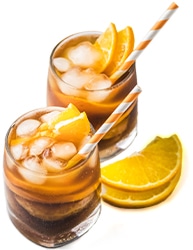
Foraged Flavors: Nature’s Cocktail Cabinet
The art of mixology is ever-evolving, and one of the most enchanting trends to emerge is the use of foraged ingredients. The appeal of unique alcohol mixology drinks that integrate nature’s offerings is swiftly growing, reflecting a desire for authenticity and sustainability. Foraging, the act of searching and harvesting wild food resources, has influenced mixologists to expand their palates and incorporate these untamed flavors into their craft.
One standout creation within this trend is the “Forest Floor” cocktail—an embodiment of woodland essence in a glass. This concoction harnesses the diverse flavors found in the wild, such as indigenous herbs, ripe berries, and even edible mushrooms. These ingredients, once overlooked by conventional mixology, offer an unparalleled taste experience rooted in the very essence of the environment from which they come.
The “Forest Floor” typically starts with a base spirit that complements earthy tones. Gin or vodka are favored for their clean profiles which allow the subtle nuances of the foraged ingredients to shine. To this, a mixologist may add a liqueur infused with wild herbs such as thyme or anise-hyssop, which contribute herbal depth and complexity to the drink.
Next, foragers might procure seasonal berries that give natural sweetness and a tart edge, enhancing the drink’s layers of flavor. Berry syrups or fresh muddles integrate a touch of the forest’s bounty. Delving deeper into nature’s pantry, mushrooms like chanterelles, commonly revered for their rich, peppery notes, can be used to create a distinctive, savory element.
Aromatic bitters derived from bark or pine needles might be included to round out the cocktail with a resinous accent, providing a sensory experience akin to a walk through the woods. Each sip promises an exploration of varying textures and tastes, heralding a connection to the land that nourishes and inspires.
Foraging not only brings novel ingredients to cocktails but also encourages sustainability and education on the natural environment. It sparks conversations about seasonality, locality, and biodiversity, making the act of enjoying a cocktail an introspective journey.
As mixologists and enthusiasts seek out these wild components, the bridge between nature and the bar narrows. This practice necessitates responsible foraging—knowledge of local ecosystems, recognizing sustainable harvesting techniques, and understanding which plants are safe to consume.
The trend of incorporating foraged ingredients into cocktails is more than a mere gimmick; it’s a celebration of local landscapes and a testament to the innovation present in contemporary mixology. It reflects a growing consciousness among consumers about where their food—and indeed their drinks—originate from. For those interested in key insights and recipes for unique alcohol mixology drinks, the journey begins with a step into the wild to discover the rich offerings of nature.
In the world of cocktails, the “Forest Floor” and its foraged counterparts represent not just a unique drinking experience, but a respectful nod to our natural world. Their popularity serves as a reminder that the next great ingredient could be growing right in our backyard—or deep in the nearest forest.
Jackfruit Jive: Tropical Unorthodox
When it comes to unique alcohol mixology drinks, the inclusion of exotic fruits can add an unexpected twist to classic cocktail recipes. One such fruit that’s carving out a niche in the cocktail scene is jackfruit. Known for its distinctive, sweet flavor profile and meaty texture, jackfruit can be utilized in various mixology creations, including a refreshing concoction known as the “Jackfruit Julep.” This drink artfully melds the flavors of fresh jackfruit with the invigorating zing of mint and the robust warmth of rum.
Jackfruit, often celebrated in South and Southeast Asian cuisines, is now making its mark in Western mixology for several compelling reasons. Its highly nuanced taste—a blend of apple, pineapple, mango, and banana—brings a unique tropical flair to mixed drinks. In addition to its flavor, jackfruit has a custard-like consistency that allows it to integrate seamlessly into cocktails, offering a luxurious mouthfeel that can’t be easily imitated by other fruits.
The “Jackfruit Julep” is a sterling example of how this tropical fruit can shine in a mixed drink. The traditional julep, with its roots in the American South, typically features bourbon, sugar, water, and a generous serving of crushed mint leaves. However, by substituting rum for bourbon and infusing the beverage with ripe jackfruit, both the flavor and texture are elevated to an entirely new level. The jackfruit pieces absorb the rum, creating pockets of flavorful delight with every sip, while the mint provides a refreshing counterbalance to the sweetness of the fruit and the alcohol’s kick.
- Start by muddling jackfruit chunks with fresh mint leaves and a dash of simple syrup.
- Add a generous pour of quality rum, typically a white or gold variety that complements the fruit’s delicate flavors.
- Fill the glass with crushed ice and churn gently to allow the ingredients to intermingle.
- Garnish with a sprig of mint and a few extra pieces of jackfruit for a vibrant visual appeal.
The resulting cocktail is a deliciously aromatic and visually appealing masterpiece that celebrates the jackfruit’s versatility. Whether enjoyed as a summer refresher or a signature drink at a trendy bar, the Jackfruit Julep exemplifies how lesser-known ingredients can transform the mixology landscape and give rise to unique alcohol mixology drinks that capture the palate’s imagination.
For those looking to expand their mixology repertoire with the delightful flavors of jackfruit, this established mixology resource can offer additional insights and inspiration. With the right approach, you can create tantalizing cocktails that are as memorable as they are flavorful, utilizing this versatile fruit to leave a lasting impression.
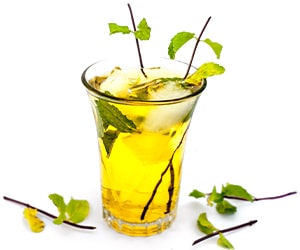
Pepper Potations: Spicy Spirits
When it comes to trendsetting in the world of mixology, the incorporation of heat through spices has created a burgeoning category of unique alcohol mixology drinks. This genre of cocktails, affectionately dubbed ‘Pepper Potations’, brings a fiery twist to the bar scene. A prime example of such innovation is the “Chili Chocolate Martini”, a concoction that melds the velvety decadence of chocolate liqueur with the piquant notes of chili-infused vodka. This combination exemplifies the dynamic interplay between the soothing creaminess of chocolate and the vibrant, tongue-tingling heat of chili.
The crafting of a ‘Chili Chocolate Martini’ is an exercise in balancing contrasting elements to create a harmonious and surprising drinking experience. The heat derived from the chilies is not merely a blunt force; rather, it’s a complex sensation that elevates the cocktail. The capsaicin in the chili peppers stimulates the palate in a way that intensifies the rich, underlying flavors of the ingredients, providing depth and character. This spicy kick juxtaposed with the rich, smooth chocolate leads to a multi-dimensional taste profile. It’s a drink that enlivens the senses and showcases the creativity possible within the realm of spicy spirits.
Understanding the intricacies of heat in cocktails requires a knowledge of how to complement and contrast flavors. With a ‘Chili Chocolate Martini’, the chili’s spice should compliment the sweetness of the chocolate rather than overpower it. The inclusion of chocolate liqueur offers a sweet base that coats the mouth, which then primes the taste buds for the intense heat that follows. Depending on the maker’s infusion technique and the type of chili used — be it the subtle warmth of ancho or the more aggressive fire of a habanero — the level of heat can vary greatly. The key lies in amplifying the chocolate’s rich profile while allowing the chili’s warmth to emerge without overwhelming the senses.
- Choosing Quality Chocolate Liqueur: The finer the chocolate liqueur, the more luxurious the cocktail.
- Balancing the Heat: Finding the perfect chili vodka for the desired level of spice.
- Infusion Techniques: Experimenting with different methods to imbue vodka with chili flavor.
- Garnishing with Care: A simple chili on top can enhance both the presentation and the taste.
For mixologists and cocktail enthusiasts eager to explore this fiery niche, further information on recipes and techniques can be found through reputable mixology resources. Many will dive into specifics, such as infusion times and complementary ingredients, tailoring each ‘Chili Chocolate Martini’ recipe to specific tastes and heat tolerances.
Pepper Potations like the ‘Chili Chocolate Martini’ are a perfect example of how understanding and playing with flavor profiles can lead to the creation of unique, memorable cocktails. The warmth of the chili and the sweetness of the chocolate are a testament to the versatility and innovative potential in the world of spirits and mixology. For those interested in experimenting with these dynamic flavor combinations, a valuable resource can be accessed on Liquid Culture, a website offering insights into crafting the perfect spicy cocktail.
Tea-Time Tipples: Brews and Booze
When it comes to creating unique alcohol mixology drinks, the infusion of tea with spirits offers an avenue of complex, sophisticated flavors that can transform the traditional cocktail hour into an elegant tea-time affair. Tea, with its diverse range of flavors, from the floral and citrusy to the robust and smoky, can elevate the nuances of a drink while adding a touch of refinement.
Tea-infused cocktails like the “Earl Grey Elixir” have gained popularity among mixologists and cocktail enthusiasts looking to blend the soothing aspects of tea with the lively characteristic of spirits. This particular gin-based drink captures the imagination by infusing the distinct flavor of Earl Grey tea into the alcohol. The unique bergamot orange flavor of Earl Grey pairs wonderfully with the botanical qualities of a good gin, bridging the gap between daytime refreshment and evening sophistication.
To preserve the delicate flavors of tea in such mixed drinks, the process usually involves steeping the tea leaves in the spirit of choice—a method known as infusion. This allows the tea to impart its full range of flavors without being diluted or overshadowed by the other mix components. A proper balance must be struck so that the tea’s taste is noticeable but not overpowering, complementing the overall profile of the cocktail.
- Starting with a quality loose-leaf tea is key to achieving the right flavor base.
- The infusion time should be monitored as different teas release their essences at varying rates. A taste test every 15 minutes can help determine when the infusion has hit the right note.
- Once infused, the spirit can be mixed with complementary ingredients such as citrus, simple syrups, or aromatic bitters to round out the drink and enhance the tea’s characteristics.
For those interested in trying their hand at creating tea-based concoctions like the “Earl Grey Elixir,” careful consideration should be given to tea selection and the complementary spirits and additives. This attention to detail will reward with a cocktail that’s both innovative and timeless, fitting for any stylish tea-time cocktail menu. As tea-infused cocktails gain traction in the world of mixology, it’s crucial for aspiring mixologists to understand the intricacies of tea and how it pairs with various spirits.
The fusion of tea with alcohol is not only a testament to the creativity found in contemporary cocktail culture but also a nod to the ancient relationship between tea and convivial gatherings. Whether you’re reaching for the sultry notes of Lapsang Souchong or the subtle sweetness of Chamomile, incorporating tea into your mixed drink repertoire can create unparalleled unique alcohol mixology drinks that transcend the ordinary and delight the senses.
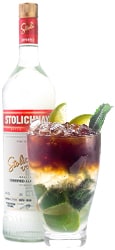
Coffee Craftings: Caffeine and Cocktails
The world of mixology is ever-evolving, and the quest to create unique alcohol mixology drinks has led to the infusion of diverse ingredients. Amongst these vibrant mixers, coffee has emerged as a popular component, perfectly mingling with spirits to give rise to a stimulating genre of cocktails. Coffee’s bold flavors and caffeinated kick have found a cozy spot in the cocktail guidebook, especially in creative concoctions like the “Espresso Rumtini.” This sophisticated drink is not only a nod to the coffee culture’s influence on the alcohol industry but also a testament to the innovation present within today’s mixology trends.
The “Espresso Rumtini” is a hallmark of this movement, capturing the essence of both worlds—coffee aficionados and cocktail enthusiasts. The basic premise involves a richly brewed espresso, a smooth rum of choice, and a whisper of orange zest, which complements the depth of coffee with its bright, citrusy notes. The result is a multi-layered experience; the robustness of coffee, the sweetness and woody complexity of rum, and the aromatic lift of orange create a palatable masterpiece.
Mixologists are discovering that coffee offers versatile flavor profiles, which can be paired with a wide array of spirits beyond just rum. Vodka, whiskey, and even tequila can dance harmoniously with the bitter notes and chocolatey undertones of coffee. Moreover, the type of coffee—whether it’s a light roast or a dark French roast—can be chosen to match the spirit’s character, ensuring each unique alcohol mixology drink is a signature one.
Coffee culture has indeed spilled into the cocktail world, marking a trend that appeals to those seeking something beyond the traditional nightcap. From bustling brunch venues to intimate evening settings, coffee cocktails are making a statement. They carved out a niche that’s both familiar and novel, with the caffeine element adding a buzz that aligns perfectly with the social nature of cocktail hour.
For those eager to dive deeper into these caffeinated concoctions, the internet offers a plethora of recipes and tips for aspiring mixologists. A reliable resource for exploring this trend further is on websites dedicated to the craft of cocktail-making. Enhance your mixology skills by experiencing and experimenting with new recipes that perfectly balance the rich, complex flavors of coffee within the diverse world of cocktails.
To find a recipe for the Espresso Rumtini or to explore the expanding universe of coffee-infused cocktails, a visit to an in-depth guide on the subject is highly recommended. Here’s an expert mixology source to embark on your journey toward mastering these unique caffeinated cocktail creations.
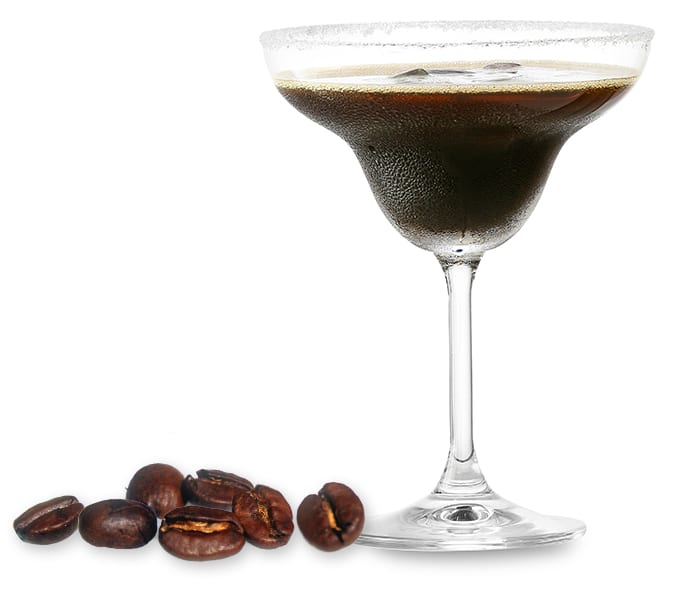
Savory Sips: Unusual Umami
When exploring the intricate world of unique alcohol mixology drinks, the introduction of umami elements can transform a simple beverage into a complex symphony of flavors. Umami, often referred to as the fifth taste alongside sweet, sour, bitter, and salty, is characterized by a deep, savory flavor. It’s no wonder mixologists have begun to harness this taste profile to create remarkable mixes like the “Miso Muddle.”
This distinctive cocktail skillfully marries the fermented depth of miso paste with the purity of vodka, and the freshness of cucumber. The result is a multidimensional drink that provides a gustatory experience unlike any traditional cocktail. Using miso, a rich source of umami, introduces a flavor that is surprisingly fitting for alcoholic beverages, despite its origin in the culinary world. For those unfamiliar with miso, it’s a paste made from fermented soybeans, salt, and koji, commonly used in Japanese cuisine—most notably in miso soup.
Creating the “Miso Muddle” begins with a base of quality vodka to ensure the drink maintains a crisp canvas for the flavors to shine. The miso paste is carefully incorporated, often requiring a balance to find the perfect amount that adds a hint of umami without overwhelming the other components. Finally, cucumber slices or juice are added to introduce a refreshing, clean contrast to the savory notes, making the cocktail as complex as it is refreshing.
Umami-rich ingredients in cocktails can profoundly affect the drinker’s palate, bringing a surprising and welcome change from the plethora of sweet and citrusy drinks that saturate cocktail menus. It challenges and intrigues the taste buds, giving a fulfilling sensation that’s often found in hearty meals. Apart from miso, other umami-inducing elements like soy sauce, tomato juice, and even seaweed can be used in crafting unique mixology creations.
When delving into unique alcohol mixology drinks, the integration of umami is not just a trend but an art form that pleases sophisticated palates. The rise of umami-focused drinks like the “Miso Muddle” speaks volumes about the ever-evolving cocktail scene, where boundaries are blurred between the kitchen and the bar, leading to an exhilarating adventure for those willing to dive into the depths of flavor. Whether you seek to impress guests at a dinner party or simply wish to indulge in a savory libation, introducing umami into your cocktails offers an uncharted territory of delicious potential.
Charcoal Charged Cocktails: The Dark Drink
The mystical allure of unique alcohol mixology drinks comes to a head with an ingredient that is both mystifying and visually striking: activated charcoal. Common in health circles for its detoxifying properties, activated charcoal has made a grand entrance into the world of mixology, notably with drinks like the “Black Magic Margarita.” This exotic concoction taps into the enigmatic character of charcoal to deliver a drink experience that’s truly unforgettable.
Activated charcoal, which is carbon that has been processed to increase its absorbency, adds a velvety, deep black hue to cocktails, conjuring an image of sophistication and intrigue on the drink menu. The “Black Magic Margarita” is a prime example, blending the classic tang of a margarita with a gothic twist that captivates the eye. It’s not just a beverage; it’s a statement piece—perfect for social media moments and themed events.
Visual appeal aside, activated charcoal has been touted for its potential health benefits, which includes its ability to bind to toxins and flush them out of the system. This aspect is leveraged in the mixology scene to pitch charcoal-infused drinks as a ‘healthier’ indulgence. While the effectiveness and safety of consuming activated charcoal in alcoholic beverages is still a topic of debate, the allure of adding a ‘detox’ element to one’s drink is a selling point that resonates with health-conscious consumers.
However, potential mixologists and consumers should take note: activated charcoal can interact with certain medications, rendering them less effective. This is a critical consideration to factor in when creating and consuming charcoal cocktails.
Creating a “Black Magic Margarita” involves carefully measuring out a small amount of food-grade activated charcoal to infuse into the traditional margarita ingredients without overpowering them. The result is a drink that is as tempting to the palate as it is to the eyes: a smooth, refreshing cocktail with an enigmatic edge.
To learn more about these tantalizing dark concoctions, including recipes and tips, consider visiting Liquor.com, a reputable source for cocktail enthusiasts and professionals alike.
As the trend of activated charcoal in cocktails continues to grow, mixologists the world over are crafting new and innovative ways to showcase this unique ingredient. Whether for the health claims, the instagrammable quality, or just for the love of trying novel drinks, charcoal charged cocktails are making a bold statement across the bar scene, with the “Black Magic Margarita” leading the charge.
Sour Surprises: Picking Unripe Fruits
Within the dynamic world of unique alcohol mixology drinks, trends constantly shape and redefine what makes a cocktail memorable. Lately, a surprising twist is gaining traction among aficionados and bartenders alike: the use of unripe fruits. This trend capitalizes on the non-traditional sour and tart flavors that these fruits can introduce into a cocktail experience, challenging the long-held dominance of ripe, sweet fruits.
Consider, for example, the “Green Mango Muddle,” a drink that epitomizes this movement. It’s a concoction that combines the sharp tang of unripe green mangoes with the clean acidity of fresh lime and the earthy undertones of tequila. Each sip delivers an unexpected sourness that’s refreshingly different from classic sweet cocktails. But what makes this trend gain popularity, and why are these flavors considered desirable?
- Unexpected Flavor Profiles: The sourness of unripe fruit offers a new sensory experience. It’s not merely about the lack of sweetness, but the emergent complexity when combined with alcohol and other cocktail ingredients.
- Refreshing Qualities: Sour flavors are often associated with refreshment. When used wisely, unripe fruits can create drinks that are particularly thirst-quenching, especially in warm climates or during summer months.
- Food Pairing: Drinks with a sour base can pair wonderfully with foods that might otherwise overshadow a sweeter drink, opening up new pairing possibilities for culinary enthusiasts.
- Health Consciousness: For those who are mindful of sugar intake, utilizing unripe fruits can reduce the overall sugar content of a drink without sacrificing flavor.
Moreover, this inclination towards sourness paves the way for a broader spectrum of fruits to be considered usable in mixology. Ingredients like underripe strawberries, tart cherries, or even green papayas are forging their way into the craft cocktail scene. Yet, it’s not simply about the fruit but the careful balance—a mixologist must weave sourness into harmony with the drink’s other components.
To craft a drink like the “Green Mango Muddle,” a balance between the potent kick of the tequila, the piercing sourness of the unripe mango, and the acidulous twist of the lime is essential. It’s a delicate dance between flavors that, when mastered, results in a truly exceptional cocktail experience.
For mixology enthusiasts curious to delve more deeply into this trend and discover recipes like the “Green Mango Muddle,” there are abundant resources available online. One can find extensive cocktail recipes and mixology concepts on reputable websites such as Difford’s Guide, establishing a great starting point for exploration.
Whether you’re a bartender looking to shake things up or a cocktail lover eager for novel experiences, incorporating unripe fruits might just be the twist to quench your thirst for innovation.
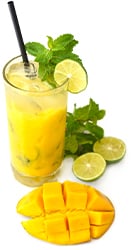
Botanical Brews: A Garden in Your Glass
Unique alcohol mixology drinks have become a canvas for creativity, an exercise in gastronomic art that blends flavors, scents, and textures in harmonious libations. Among the most enchanting trends in contemporary cocktail culture is the incorporation of botanical elements, which imbue drinks with an earthy, floral, and sometimes herbaceous character. Unlike traditional cocktails, these botanical brews invite the imbiber to a more sensory experience—a garden in your glass, so to speak.
Take, for instance, the “Lavender Lilt,” a cocktail that showcases the fragrant allure of lavender. This drink marries the aromatic flower with the clean taste of vodka and the bright, tangy essence of lemon. As mixologists are akin to chefs in their pursuit of layered flavors, using botanicals like lavender enables them to add complexity and nuance to their concoctions. The Lavender Lilt not only stands out with its distinctive flavor but also with its visual appeal; the lavender flowers can be used as both an ingredient and a garnish, providing an attractive pop of color.
In crafting these unique beverages, mixologists employ a variety of botanical elements, which may include an array of herbs, edible flowers, roots, and barks. These can be infused into spirits, muddled into cocktails, or used as garnishes, thus adding depth to the drink’s profile. Aromatic herbs like rosemary, basil, and thyme are frequent flyers in the mixology garden, while flowers such as hibiscus, elderflower, and rose add a delicate touch of perfume and sweetness.
- Infusions: Botanicals can be steeped in alcohol to create uniquely flavored spirits.
- Herbal Muddling: Crushing herbs releases their oils, blending seamlessly into a cocktail’s main body.
- Floral Syrups: Flower-infused syrups add a sweet and aromatic sweetness to drinks.
- Botanical Bitters: A few dashes can add a layer of flavor complexity that balances a drink’s profile.
Moreover, the sustainability movement has encouraged the local sourcing of ingredients, which leads to the use of seasonal and local botanicals, and thereby not only supports local businesses but also reduces the carbon footprint associated with importing ingredients from afar. Unique alcohol mixology drinks featuring botanicals also cater to those looking for innovative, non-traditional beverages that are sometimes healthier and lighter in alcohol content.
For those eager to explore the art of botanical mixology further, plenty of resources are available for inspiration. For a high ranking, reputable source, consider visiting Liquor.com, which offers a wealth of recipes and how-to guides for crafting sophisticated, botanical beverages.
The allure of botanical mixology lies in its versatility and its appeal to connoisseurs looking for a unique drinking experience. Whether it’s the Lavender Lilt or another botanically infused beverage, these creations are more than just drinks—they’re an exploration of the senses, each sip reminiscent of wandering through a lush, fragrant garden.
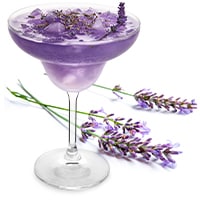
Lacto-fermented Libations: Probiotic Potables
As we delve into the world of unique alcohol mixology drinks, we discover a trend that is both health-conscious and adventurous. Lacto-fermented beverages, like kombucha, kefir, and others, have joined the ranks of cocktail ingredients, offering a delightful, tangy twist to traditional mixtures. These probiotic-rich liquids not only promise potential health benefits, but they also infuse cocktails with unique and complex flavors, creating a new niche in mixology.
One standout concoction that embodies this trend is the “Kombucha Cooler.” Typically, a Kombucha Cooler involves a harmonious blend of fermented tea and spirits such as vodka or gin. This cocktail is an epitome of balance, with the effervescent, sour notes of kombucha complementing the crisp, clean taste of the alcohol. Not only does this mixture provide a refreshing twist to the drinker’s palate, but it also brings forth the health angle of fermented drinks.
The health-conscious consumer will appreciate the probiotic nature of fermented drinks like kombucha. Lacto-fermentation is a process whereby natural bacteria feed on the sugar and starch in the food creating lactic acid. This fermentation process preserves the beverage and promotes the growth of beneficial bacteria, or probiotics. These bacteria are known to support gut health, improve digestion, and can even bolster the immune system. While kombucha can’t be claimed as a cure-all, especially when mixed with alcohol, it does provide a healthier alternative to sugar-laden mixers.
Beyond health, the distinctive tangy taste of lacto-fermented drinks adds an unparalleled depth to cocktails. Kombucha itself comes in a variety of flavors, from classic ginger-lemon to more exotic fruit blends, which can enhance the taste profile of a cocktail. When expertly paired with the right spirits and additional ingredients like herbs or citrus, these fermented beverages can create a cocktail experience that is truly alluring.
For mixologists and bartenders, lacto-fermented drinks like kombucha offer a canvas for creativity. They can be used as a base, a mixer, or even as a secondary flavor enhancer. In the context of unique alcohol mixology drinks, the tangy, slightly acidic profile of these beverages can cut through the richness of spirits, adding brightness and lightness to the cocktail.
To explore further into the world of probiotic cocktails and how to integrate them into your next gathering, visit Liquor.com, where a plethora of recipes and ideas awaits, helping you navigate the exciting frontier of lacto-fermented mixology.
Curious Concoctions: The Wildest Combinations
In the ever-evolving world of unique alcohol mixology drinks, mixologists are constantly pushing the envelope, creating blends that are as surprising as they are delightful. These boundary-pushing beverages are not just about taste; they’re a form of culinary artistry that elicits strong reactions and enduring memories. One such adventurous creation is the intriguingly named “The Stilton Sip,” a cocktail that daringly combines the creamy tang of blue cheese with the refined essence of pear eau de vie.
“The Stilton Sip” epitomizes the creative spirit of modern cocktails. By marrying the unexpected zest of blue cheese with the fruity sophistication of pear eau de vie, this drink challenges the palate in a way that’s electrifying. The juxtaposition of these flavors is emblematic of a trend in mixology that prizes innovation and the courage to chart untrodden territory in flavor combinations. Crafting such curious concoctions requires a deep understanding of how individual flavors can complement or contrast each other to produce a harmonious whole.
Customers’ reactions to these avant-garde concoctions are as diverse as the ingredients that compose them. For some, the draw is the sheer novelty of tasting something so radical, while for others, it may be the thrill of engaging with a drink that could potentially shift their perceptions of what cocktails can be. Conversations sparked by such drinks often turn into spirited discussions about the drink’s components, the inspiration behind it, and the audaciousness involved in its creation.
As mixologists continue to craft these unique alcohol mixology drinks, one crucial factor remains constant: the importance of balance. No matter how wild the combination, a truly great cocktail must always achieve a harmonious blend of its components. This ensures that each sip delivers a complex, yet ultimately pleasant, experience. The willingness to experiment may be the driving force behind these concoctions, but it is the disciplined pursuit of balance that makes them memorable.
Interested in exploring more about eccentric mixology creations? You can find an extensive list and details of unique cocktails that will expand your horizons and perhaps even inspire you to dabble in the art of mixology yourself.
Artisanal Ice: More Than Just Frozen Water
When it comes to unique alcohol mixology drinks, ice is not just a frozen afterthought—it’s a central component that elevates a good cocktail to a great one. Artisanal ice, with its various shapes, sizes, and clarities, goes beyond mere function to add an aesthetic appeal and a refined touch to mixology.
The texture and taste of cocktails can be profoundly influenced by the type of ice used. For example, large ice cubes or spheres melt more slowly than their standard counterparts, meaning they dilute a drink at a slower rate. This is particularly important for high-quality spirits and intricate concoctions, where maintaining the original flavor profile is essential. Smaller shards or crushed ice, meanwhile, chill drinks rapidly – perfect for a refreshing jolt in concessions like juleps and mojitos. However, it is the crystal clear ice, free from impurities and air bubbles, that stands as the crown jewel of artisanal icing.
Take, for instance, the “Crystal Clear Colada.” This twist on the classic Pina Colada, deemed one of the most skillful unique alcohol mixology drinks, shines when made with crystal clear ice. This artisanal ice, often created using directional freezing techniques, brings out the vivid colors of the drink and enhances its tropical allure without diluting the rich blend of coconut cream and pineapple juice with rum.
Moreover, visually stunning ice doesn’t just complement flavors—it also serves as a conversation piece. From geometric blocks to custom shapes that cradle the liquid, artisanal ice becomes part of the drink’s storytelling. Custom molds can even emboss logos or create patterns, making the ice a brand ambassador or part of an event’s theme.
In fine cocktail establishments, the clarity of ice is symbolic of quality. Like the notes of a well-aged wine, the transparency of a cocktail’s ice speaks to care and attention to detail. By experimenting with clarity, size, and shape, mixologists are able to add a unique layer of complexity to each glass they craft.
For those interested in exploring the depths of how artisanal ice makes a difference in cocktails, numerous resources are available online. A great starting point would be checking out Liquor.com, which offers various insights into the nuances of mixology.
In summary, artisanal ice is an essential element in the world of cocktail mixology. The correct application not only enhances a drink’s flavors and texture but also adds a distinctive visual touch that could become the hallmark of a signature cocktail. As such, artisanal ice makes each cocktail not just a drink, but an experience to be savored.
